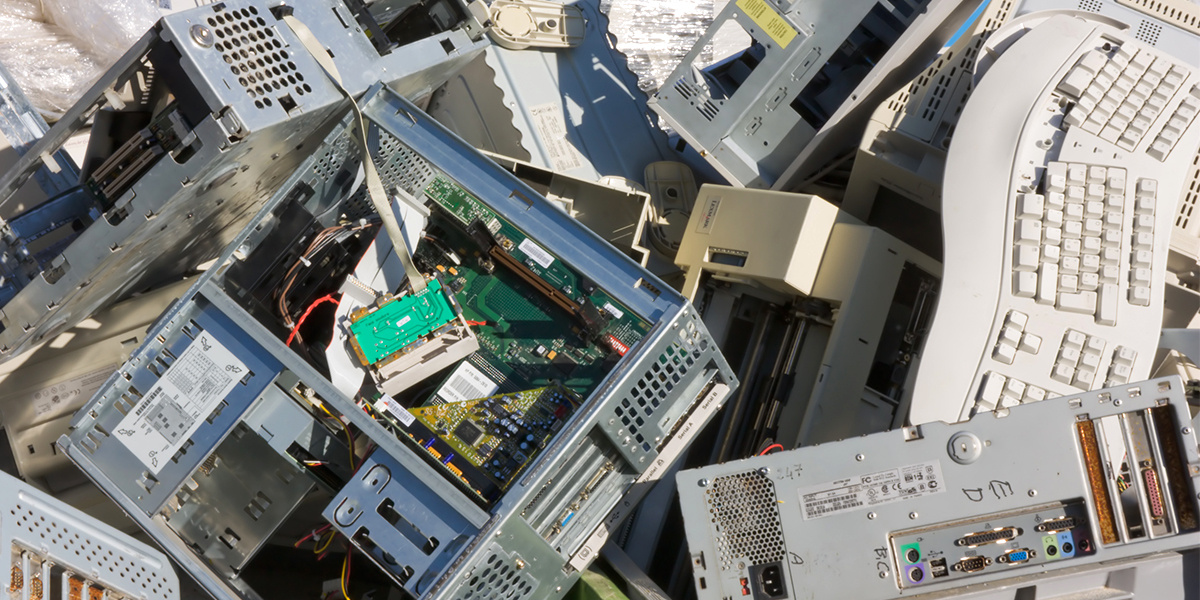
Electronic Waste Study Finds $65 Billion in Raw Materials Discarded in Just One Year

Cap Sciences / Flickr
The amount of electronic waste around the world grew to a record 45 million tons in 2016, according to a United Nations-backed study released on Wednesday.
To put that in perspective, the weight of last year’s e-waste was equivalent to about 4,500 Eiffel Towers, according to the study by the UN university, the International Telecommunication Union and the International Solid Waste Association. The amount of e-waste—defined as anything with a plug or a battery—rose by eight percent since 2014, the time of the last assessment.
The study also found that raw materials thrown out as e-waste—metals such as gold, silver, copper, platinum and palladium— were worth $64.61 billion in 2016. But despite this economic incentive, only 8.9 million tons of e-waste were recovered.
“Only 20 percent [of e-waste] is going in the official collection and recycling schemes,” Ruediger Kuehr, head of the UN University’s Sustainable Cycles Programme, told Reuters. He noted that the amount of e-waste is more shocking considering that 67 countries, covering two-thirds of the world’s population, has legislation for processing e-waste.
In 2016, the worldwide e-waste average was 13.5 pounds per person, or 54 pounds for a family of four. But in the U.S. or Canada the figure was 3.3 times higher. And the global trend is surging. By 2021 there will be a 17 percent increase, making e-waste the fastest growing part of the world’s domestic waste stream, according to the study. Put simply, the study found that rising incomes and falling prices on electronic goods was driving the rising amount of e-waste.
Although countries widely vary in recycling capacity, nowhere in the world is equipped to deal with increasing e-waste—there isn’t a country that come closes to recycling even half. Europe, at 35 percent, has the highest collection rate, while Australia and New Zealand, two countries that produce the highest e-waste per person at 38 pounds, collect and formally recycle only six percent of their electronics.
The U.S.—where 30 percent of e-waste gets landfilled, exported or recycled informally—hasn’t ratified the Basel Convention, which bans the transport of e-waste due to its association with heavy metals like lead and mercury. But this problem isn’t limited to the U.S.
European and North American countries, despite being signatories to the Basel Convention, often ship e-waste to poor countries as “electronics for reuse” or hidden with legitimate cargo. Though the health consequences of e-waste exposure have been poorly studied, experts suspect that contamination may carry severe risks.
The study’s authors noted that ultimately the business model of electronics needs to shift from one that produces replaceable electronics to one that makes electronics easier to repair and recycle.
“Consumers are only interested in price and performance. That needs to change,” Vanessa Gray, one of the study’s authors, told National Geographic.

 233k
233k  41k
41k  Subscribe
Subscribe 